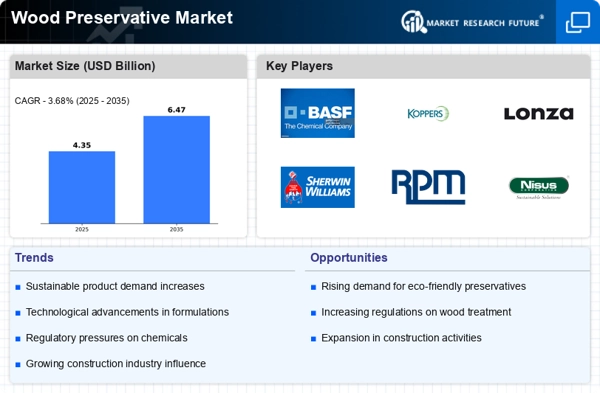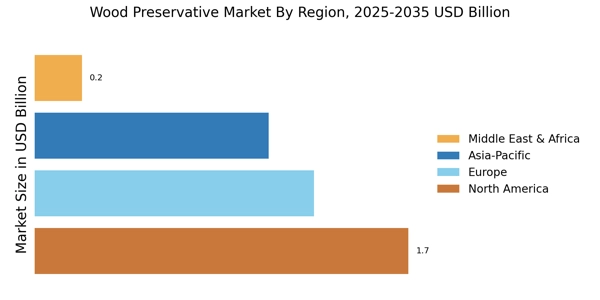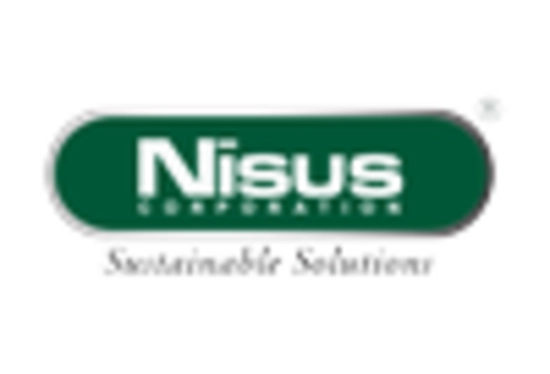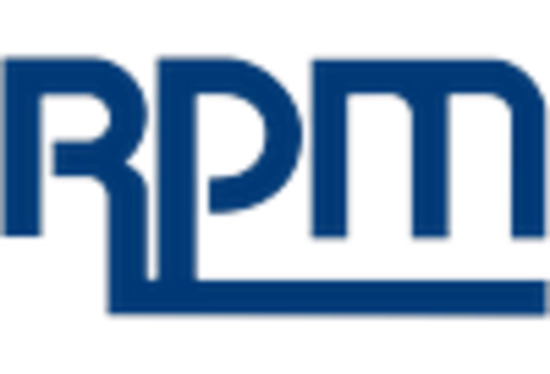Increasing Demand for Sustainable Products
The Wood Preservative Market is experiencing a notable shift towards sustainable solutions. As consumers become more environmentally conscious, there is a rising demand for eco-friendly wood preservatives. This trend is driven by regulations aimed at reducing harmful chemicals in construction materials. In 2025, the market for bio-based wood preservatives is projected to grow significantly, reflecting a broader commitment to sustainability. Companies are increasingly investing in research and development to create products that meet these demands, which may lead to a competitive advantage. The emphasis on sustainability not only aligns with consumer preferences but also addresses regulatory pressures, thereby enhancing the market's growth potential.
Regulatory Compliance and Safety Standards
Regulatory compliance is a driving force in the Wood Preservative Market. Governments worldwide are implementing stringent regulations regarding the use of chemicals in wood preservation. These regulations aim to ensure the safety of both consumers and the environment. As a result, manufacturers are compelled to develop products that comply with these standards, which may lead to increased research and development expenditures. The market is likely to see a shift towards safer, less toxic preservatives, which could reshape product offerings. Compliance with these regulations not only enhances consumer trust but also opens up new market opportunities for innovative solutions.
Urbanization and Infrastructure Development
The ongoing urbanization and infrastructure development are significantly influencing the Wood Preservative Market. As urban areas expand, the demand for construction materials, including treated wood, is on the rise. This trend is particularly evident in emerging economies, where rapid urban growth is leading to increased investments in residential and commercial projects. In 2025, the construction sector is expected to contribute substantially to the wood preservatives market, with a projected increase in demand for treated wood products. This growth is likely to be fueled by the need for durable and long-lasting materials that can withstand environmental challenges.
Rising Awareness of Wood Preservation Benefits
There is a growing awareness of the benefits of wood preservation within the Wood Preservative Market. Consumers and businesses are increasingly recognizing that treated wood offers enhanced durability, longevity, and resistance to pests and decay. This awareness is driving demand across various sectors, including construction, furniture manufacturing, and outdoor applications. In 2025, the market is expected to expand as more stakeholders understand the long-term cost savings associated with using preserved wood. This trend may lead to increased investments in wood preservation technologies and practices, further propelling market growth.
Technological Innovations in Wood Preservation
Technological advancements are playing a crucial role in the Wood Preservative Market. Innovations such as advanced application techniques and the development of new chemical formulations are enhancing the effectiveness of wood preservatives. For instance, the introduction of nanotechnology in wood treatment processes is expected to improve durability and resistance to pests and decay. The market is projected to witness a compound annual growth rate of approximately 5% over the next few years, driven by these technological improvements. As manufacturers adopt cutting-edge technologies, they are likely to offer more efficient and effective solutions, thereby attracting a broader customer base.


















Leave a Comment